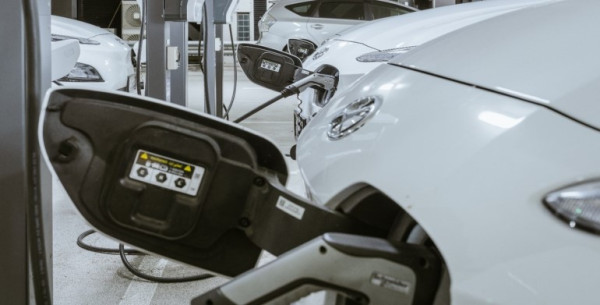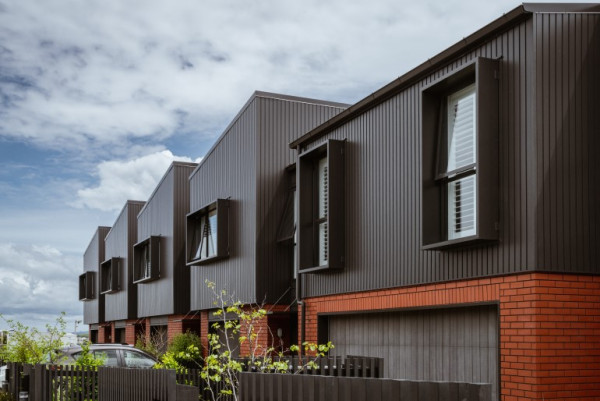3. Keeping pace with new technologies and new fire challenges
Allowing for the use of innovative technologies in the Building Code to provide protection from new and emerging fire risks.
On this page
New technologies, urban design and methods of construction have evolved rapidly since the last review of the fire safety regulations in 2011. The Building Code should allow for the use of innovative technologies and provide protection from new and emerging fire risks.
3.1. The fire safety provisions create barriers to using overseas products
The Government is committed to strengthening competition by making it easier for a wider range of overseas building products to be accepted for use.
But there are barriers to using overseas building products because of the Building Code’s regulations for fire safety. These regulations refer to fire testing standards for New Zealand products and does not allow for products tested to overseas standards. This makes it difficult to use overseas products in New Zealand.
This means the Building Code:
- may not allow for the use of new or innovative materials, and
- can add unreasonable costs at a time when many New Zealanders are already facing significant cost pressures as the choice of available products is limited.
New Zealand-specific fire testing requirements for surface finishes, cladding systems, and other fire rated products:
- limits the availability of products that can be used in the market in New Zealand, and
- slows down the process for bringing new products to market.
Case study: Fire test standard specified in code clause
Building Code clause C4.3(a) requires internal surface finishes to be tested to ISO 9705:1993, which is a fire test standard that helps determine how a building material contributes to fire growth when ignited.
This fire test has been updated to a newer version, and there are also other types of fire tests that could be used.
Because this test standard is cited in the Building Code (and there is no alternative option to comply), it requires imported products to be retested to this outdated standard and local products to undergo 2 tests, one for the New Zealand market and one for export.
3.2. The Building Code has not kept pace with modern construction methods
The Building Code’s fire safety provisions have not kept pace with modern methods of construction such as mass timber, modular buildings, and offsite manufacturing.
Modern construction methods and details of how they meet requirements are not documented in Building Code requirements and in some cases not even mentioned.
There is increasing demand for timber to be used in new buildings, including large building structures.
There is not enough information in the Building Code to work out whether mass timber would compromise the fire safety of buildings it is used in. This uncertainty is a barrier to the sector using innovative timber products and limits the types of material that can be used.
Mass timber buildings introduce additional complexities in designing for fire safety. Effective regulation can support the use of mass timber and remove any uncertainty on its use, which can support the sector to innovate and may also support wider climate change objectives.
When the Building Code does not keep pace with modern construction methods in building it acts as a barrier to innovation. This can add costs and delays in the system and means it is difficult for the sector to:
- introduce efficient methods of construction, and
- make informed choices on the sustainability of their designs.
3.3. Fire hazards from new technology may not be adequately addressed
Most new technology is ‘green’ and renewable such as electric vehicles, solar panels, and small and medium scale energy storage systems (including lithium-ion batteries).
The use of green and renewable technology in residential and commercial buildings present new fire hazards that challenge the robustness of current fire designs.
If new hazards are not appropriately managed in building design, they can present an increased fire risk to the building and its occupants.
There are currently no requirements in the Building Code that specifically address the risks from green and renewable technology. The current fire provisions in the Building Code are not flexible enough to address these or other new hazards.
Fires involving lithium-ion batteries are happening more frequently as they become the primary power source for more devices, including cars and e-scooters. These batteries store a lot of power in a small package so when they do catch fire, the effects can be severe.
Solar panels can also present challenges as it may be difficult to access, or de-energise, them in an emergency.

Figure 4. The emergence of new technologies, such as lithium-ion batteries in electric vehicles, present different fire safety challenges
3.4. The fire safety provisions have not kept up with modern house construction
The types of homes we are building have changed over the past decade. New Zealand is building more multi-unit dwellings every year. This includes townhouses and apartment-style buildings such as those shown in Figure 5. Over half of all new consented homes are in multi-unit buildings.
Multi-unit dwellings and medium or high-density housing have their own unique challenges. New housing developments are taller, closer together, and have higher fuel loads than traditional dwellings. These factors can impact emergency exits, the ways to limit fire spread, and how to protect the structure.
Access to residential buildings for firefighters is getting difficult as houses are further from the street or accessed only by narrow driveways. This can delay firefighters and increases the risk a fire:
- is life-threatening
- causes the loss of someone’s home
- spreads to buildings close by.
Case study: Access to infill housing
In 2022, Fire and Emergency New Zealand (FENZ) responded to an infill housing fire. The fire crews arrived within 7 minutes of being notified. However, access to the development was difficult. The driveway was 45 m long and 2.9 m wide — too narrow to fit a fire truck through. Access to the house involved firefighters moving on foot and removing physical barriers on a neighbouring property in order to access the fire.
Access to a street hydrant for firefighting was over 270 m away. The building was determined to comply with the Building Code by meeting Acceptable Solution C/AS1. However, the fire destroyed the property and 3 other surrounding properties. This outcome could have been avoided with faster access to the building and the better access to the street hydrant.

Figure 5. Modern multi-unit buildings and medium or high-density housing have different fire safety challenges
3.5. Barriers to using newer fire safety systems
Improvements to the technology of fire safety systems have not been considered in the Building Code system. These newer technologies may better address the hazards in a building than current fire safety features.
While the Building Code system sets some requirements for warning systems for fires, there are no specific requirements for visual alerting devices. These are devices which can be used for emergency notification to warn people:
- with hearing impairments, or
- in a building where the background noise is too loud for audio alarms to be heard.
There are no specific provisions within the Building Code system that consider automatic fire suppression, other than the existing one for water-based fire sprinkler systems. However, other types of fire suppression systems, such as those which use gas or foams may be more effective than water for some specific fire hazards.
Evacuation through stairwells in a building can be challenging in tall buildings, hospitals, and care facilities. Advances made in lift technology now allow for their use in an evacuation.
Because the Building Code system does not currently consider these new technologies, and there are often delays in citing new versions of standards into the Building Code documents, applying for a building consent as an alternative solution can be difficult.
There can be challenges and duplication of work for designers, engineers, product manufacturers, or tradespeople in identifying how specific building products and building work contribute to fire safety in a building. These barriers to using new technologies result in:
- poorer safety in buildings and for their occupants, and
- more costs because of decision making delays.
3.6. Questions on the Building Code keeping pace with new technologies and new fire challenges
Please consider these questions if you are going to give MBIE feedback on this section.
- Do you agree with MBIE’s assessment of the issues on keeping pace with new technologies and new fire challenges?
- Are there any other issues MBIE should consider on keeping pace with new technologies and new fire challenges?
- Do you have any other comments or feedback on the ability of the Building Code to keep pace with new technologies and new fire challenges?

